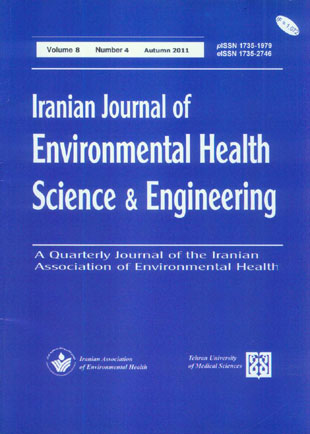DETECTION OF PHENOL DEGRADING BACTERIA AND PSEUDOMONAS PUTIDA IN ACTIVATED SLUDGE BY POLYMERASE CHAIN REACTION
Author(s):
Abstract:
Phenol is one of the organic pollutants in various industrial wastewaters especially petrochemical and oil refining. Biological treatment is one of the considerable choices for removing of phenol present in these wastewaters. Identification of effective microbial species is considered as one of the important priorities for production of the biomass in order to achieve desirable kinetic of biological reactions. Basic purpose of this research is identification of phenol-degrading Pseudomonas Putida in activated sludge by polymerase chain reaction (PCR) that has high speed and specificity. In this research, 10 various colonies of phenol-degrading bacteria were isolated from municipal activated sludge and the rate of phenol removal and growth rate of these bacteria were assessed in different concentrations of phenol (200 - 900 mg/L). Confirmation of the largest subunit of multicomponent phenol hydroxylase (LmPH) gene and gene coding the N fragment in Pseudomonas Putida-derived methyl phenol operon (DmpN gene) through PCR were used for general identification of phenol-degrading bacteria and Pseudomonas Putida, respectively. Presence of a 600 bp (base pairs) bond in all of isolated strains indicated that they contain phenol hydroxylase gene. 6 of 10 isolated bacteria were Pseudomonas Putida because they produced a 199 bp PCR product by DmpN primers. According to PCR results in this study, the best phenol-degrading bacteria that can utilize 500 - 600 mg/L phenol completely after 48 hours incubation, belong to Pseudomonas Putida strains. It is clear that use of isolated bacteria can lead to considerable decrease of treatment time as well as promotion of phenol removal rate.
Keywords:
Language:
English
Published:
Iranian Journal of Environmental Health Science and Engineering, Volume:6 Issue: 2, spring 2009
Page:
115
https://magiran.com/p631242


